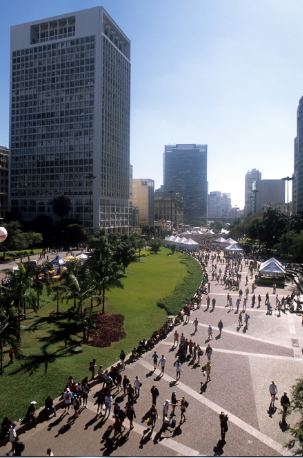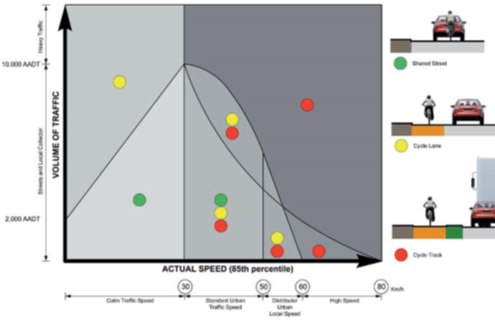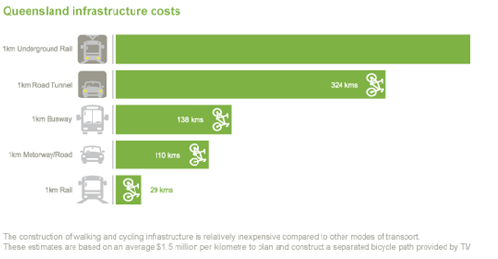by Erinn McNamara
Español | English

Continuing the conversation on walkable cities, today we will analyze another important facet of urban walkability: the overall efficient and safe interaction between cyclists and other road users. In a previous post,
we mentioned that the definition of walkability not only extends to pedestrians, but also includes adequate public transit, streets designed for bicycles and transit, urban design oriented to promote pedestrian flow, mixed-use construction, and public amenities, such as parks. Despite the fact that my neighborhood rates a 4 with good walkability on the Brookings’ 1-5 scale (with 1 being poor walkability and 5 being very good walkability), using a bicycle can be unpleasant and even dangerous. In other words, it seems that there is no clear relationship between the level of walkability and the safety of riding a bicycle. Drivers lack awareness of cyclists on the roads, and this, is in large part, is why there is reluctance within the population to cycle. My spouse is one of these people that prefer to walk one or two miles than ride a bicycle the same distance, citing poor safety while cycling with traffic. So, would the construction of a better cycle infrastructure encourage cycling and improve walkability? New studies indicate that it is true, and that cycle infrastructure increases safety and allows people to enjoy the urban landscape in a different way by creating a safer space for pedestrians and cyclists.
A recent article describing the recently published Irish Design Manuel for Urban Areas captures the essence of road-user hierarchy giving priority to the most vulnerable road users first and protects them from the risk of other motorists. The suggested hierarchy from highest to lowest priority is pedestrians, cyclists, public transit, and cars. To establish an infrastructure for cyclists we must have safety-related standards. For example, cyclists can be integrated, segregated, or completed protected from traffic depending on the volume and speed of traffic (see figure 1). As the volume and the speed of traffic increased urban designers are encouraged to create lanes for cyclists.

Additionally, the costs associated with the construction of bike paths are significantly lower than those of other roadway constructions. Looking at the comparison completed by the Australian Bicycle Council (see figure 2), the construction of 0.62 miles (1 kilometer) of road has the equivalent cost of miles 68.3 miles (110 kilometers) of cycle lane. We must remember, however, that in this comparison the capacity to carry passengers or people is different for each type of infrastructure.

Cycle infrastructure reinforces the proper hierarchy of roads, with cycle lanes as the physical representation for the right of cyclists to use the roadway and to improve overall walkability. Given these strong arguments for better bike infrastructure, why don’t we see more of a shift in the priorities of local governments to favor achieving safer, more environmentally friendly, and less expensive walkability cities through better cycle infrastructure?


Leave a Reply